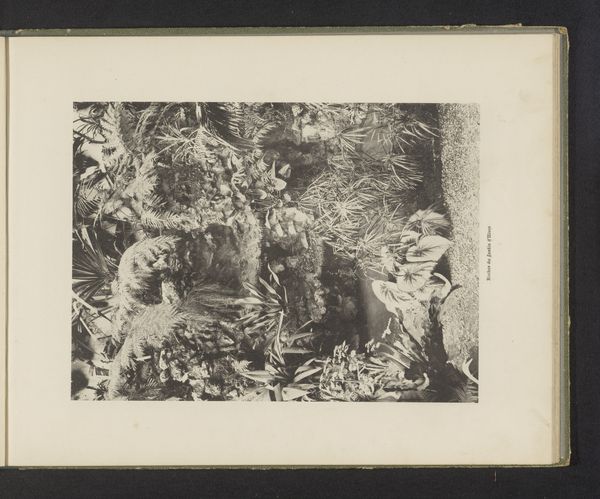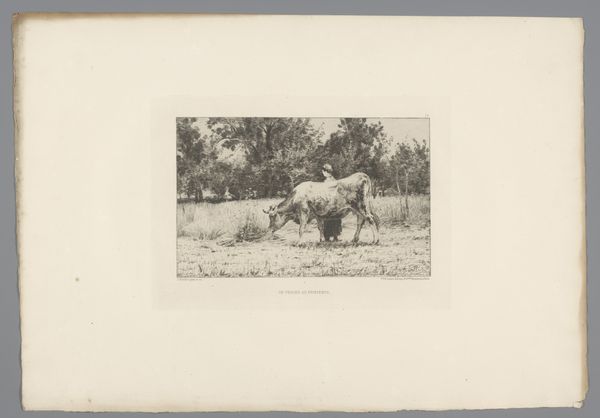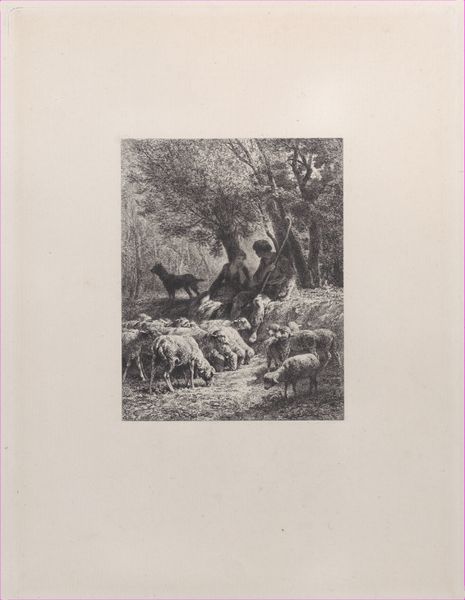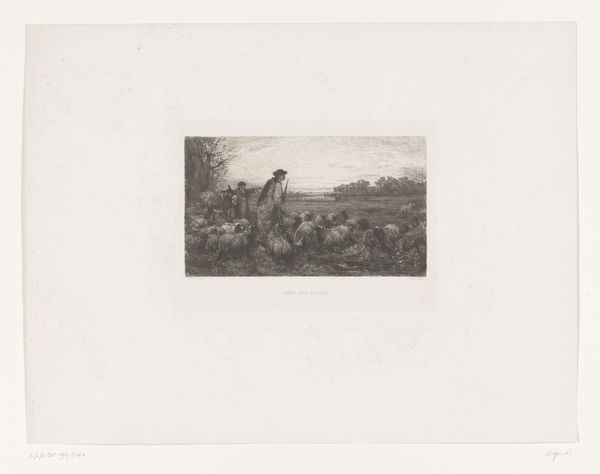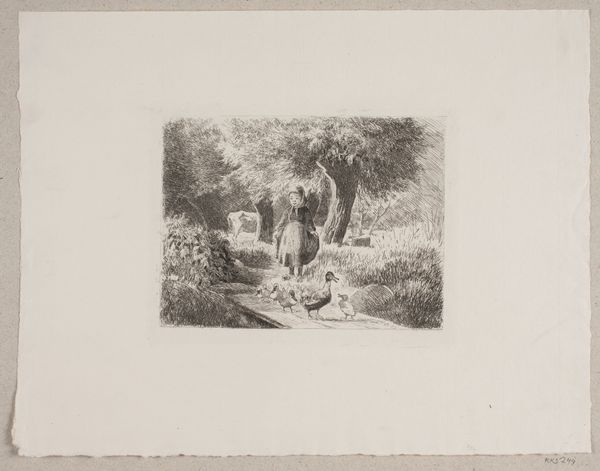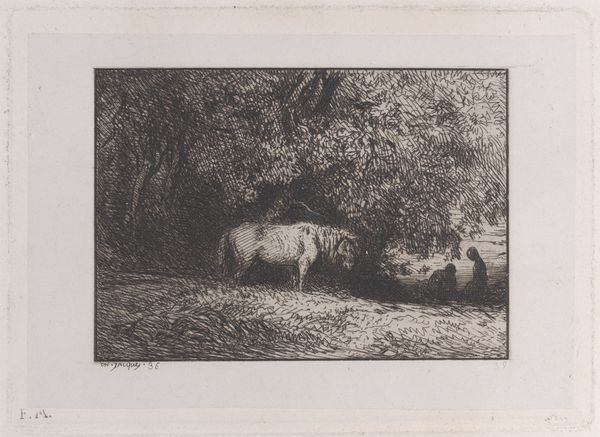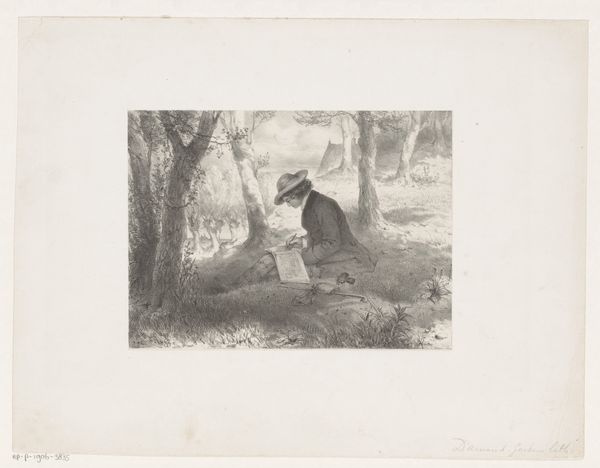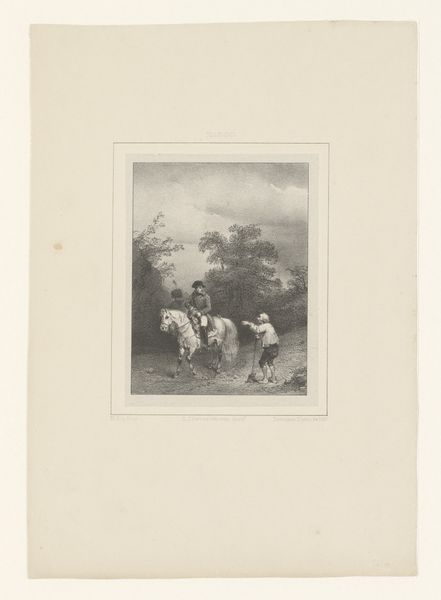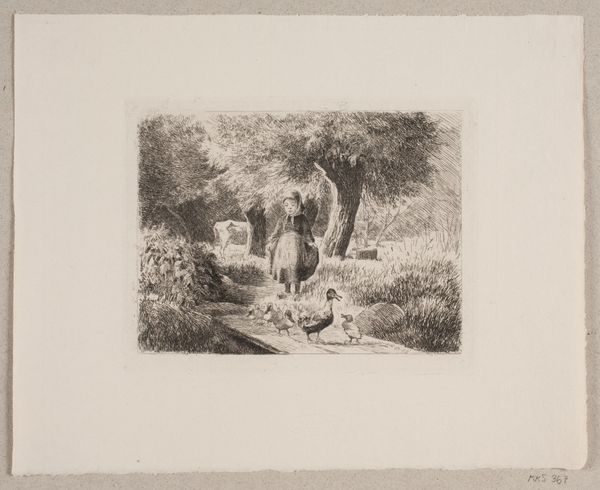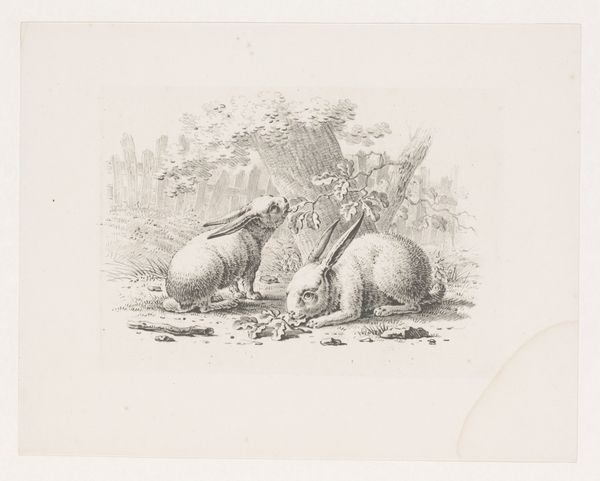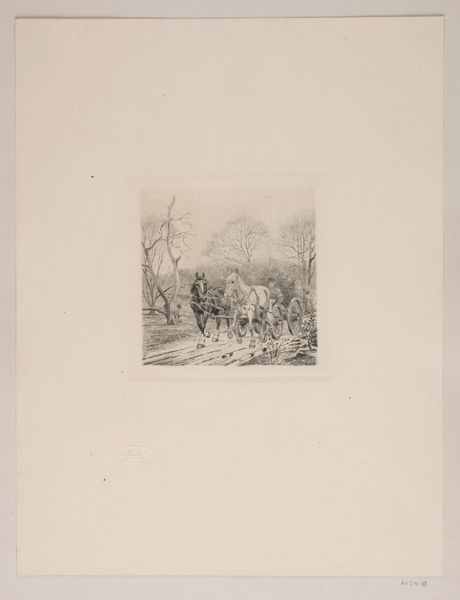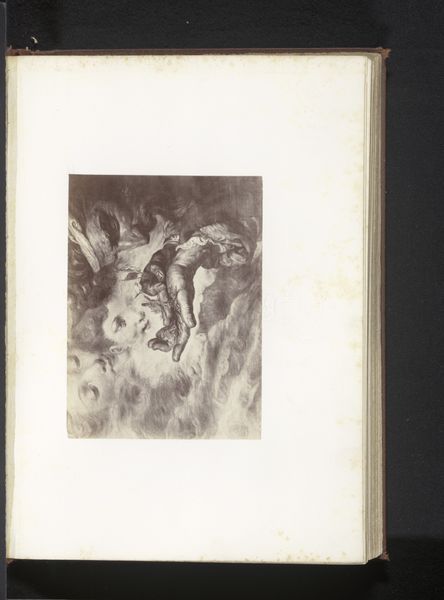
print, etching
#
ink paper printed
# print
#
etching
#
landscape
#
genre-painting
#
realism
Dimensions: height 158 mm, width 238 mm
Copyright: Rijks Museum: Open Domain
Curator: This etching by Conrad Ahrendts, dating back to 1882, presents a group of deer in an open field. Ahrendts really captures a tranquil encounter. Editor: It strikes me immediately – there's something melancholic about it. It’s as though the artist has stumbled upon these creatures mid-daydream, the way the light filters and fades, the heaviness of the etching ink, that overcast sky, the lack of strong color or shadows adds to a sort of… pensive silence? Curator: Interesting that you find it melancholic. Ahrendts’ approach is typically realistic and the details—the texture of their fur, the wild vegetation—are meticulous. The bucks posture projects this raw natural authority, standing almost on guard and vigilant. Maybe your own encounter with the wild comes with its own melancholic associations? Editor: Maybe, I guess I read this anxiety of the “wild” very differently back in 1882 than it plays out today. What was framed as pristine landscape paintings often obscured displacement through land enclosure, changing rural economies, or a shifting dynamic between human communities and nature during periods of increasing industrialization, something artists don’t always critically explore in this type of realistic image. This genre often promotes romantic ideals rather than critical dialogues around industrial capitalism, for example. Curator: I see what you mean, and perhaps it speaks to a more universal theme—the vulnerability of nature confronted with relentless development. Do you feel that Ahrendts is simply representing that conflict, or is he adding commentary on this imbalance? Editor: I don't know if this is what Ahrendts specifically had in mind, and to be honest it feels kind of flat aesthetically, especially compared to some other wildlife artists of that period. This composition doesn't encourage further thought. I would argue the perspective and content fall a bit short given the historical moment in which it was created. But maybe its strength is to encourage contemporary eyes like ours to make exactly those historical-socio connections as it hangs in a contemporary museum space? Curator: Yes, sometimes an image is just ripe with opportunities for conversation. And if nothing else, I certainly am thankful to spend this moment of reflection considering its place in both our perspectives. Editor: Ditto! I appreciate the prompt to think of the complex associations surrounding this particular piece through both of our interpretive frameworks.
Comments
No comments
Be the first to comment and join the conversation on the ultimate creative platform.
